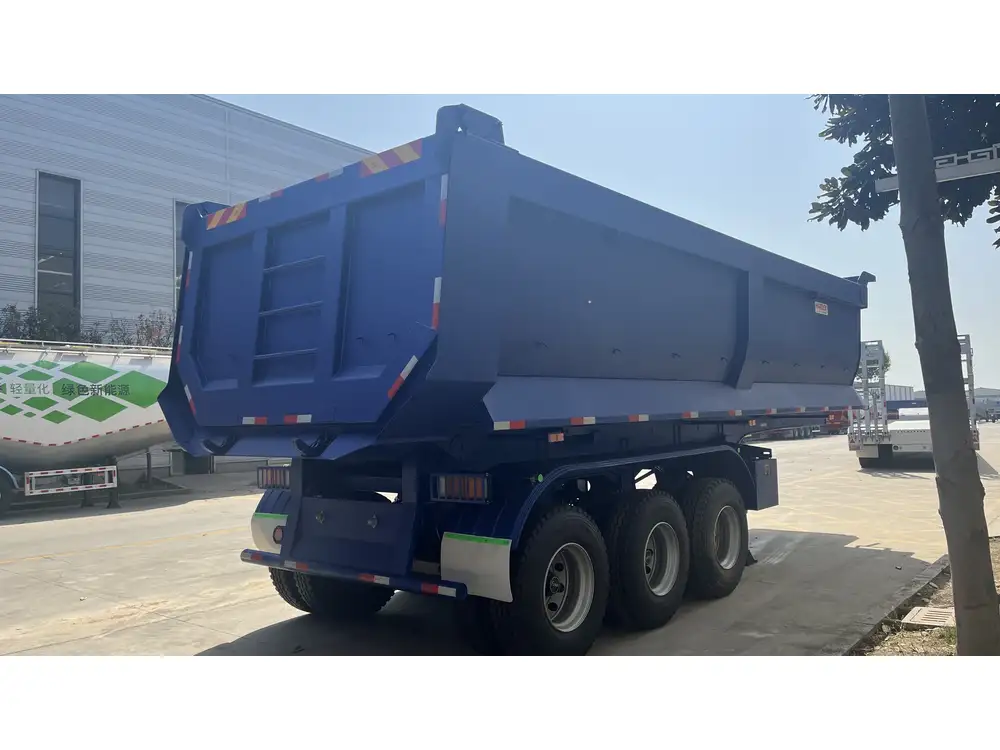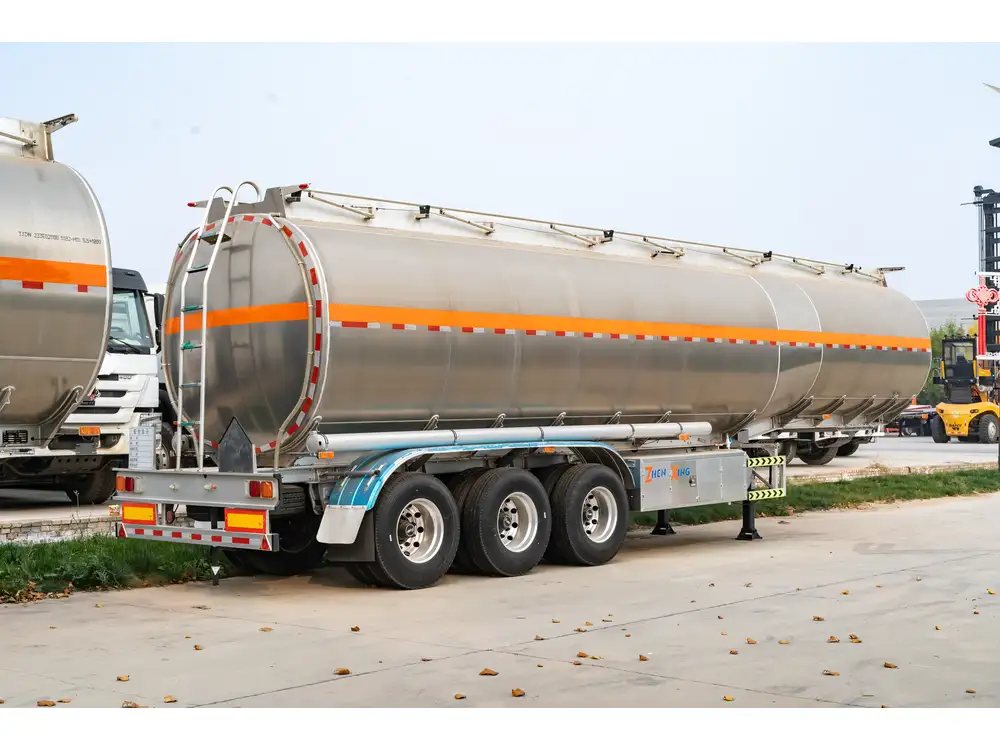When embarking on the journey to understand the weight of semi-trailers, one must delve into the nuances of design, construction materials, and varying regulations that influence these colossal vehicles. As manufacturers have refined their processes, the specifications and potential load capacities of semi-trailers have evolved, prompting us to dissect their empty weight—an essential factor for operators and logistics managers alike. In this comprehensive guide, we will elucidate the intricacies surrounding the empty weight of semi-trailers and explore factors that contribute to these specifications.
Semi-Trailer Weight Overview
What Is a Semi-Trailer?
A semi-trailer is a vehicle designed for transporting goods, consisting of a trailer that is attached to a tractor unit. Unlike a full trailer, a semi-trailer has no front wheels and relies on the tractor unit for support. This design allows for increased cargo capacity and maneuverability.

Importance of Knowing Empty Weight
Understanding the empty weight of a semi-trailer is paramount for various reasons:
- Load Calculation: The empty weight is crucial for calculating the maximum payload, which directly impacts the load transport cost.
- Regulatory Compliance: Different jurisdictions have weight regulations that must be adhered to prevent fines and ensure road safety.
- Fuel Efficiency: Knowing the weight can help optimize fuel consumption and operational efficiency.
Factors Influencing Semi-Trailer Empty Weight
There are myriad factors that impact the empty weight of a semi-trailer. Below, we outline the primary contributors:
| Factor | Description |
|---|---|
| Material Composition | The choice between steel, aluminum, or composite materials significantly affects overall weight; aluminum, while lighter, may have different strength characteristics. |
| Design Configuration | The layout and structural design, including features like side walls, flooring, and aerodynamics, can influence weight. |
| Size and Dimensions | Standard lengths vary (typically between 28 to 53 feet), and larger trailers will naturally weigh more. |
| Chassis Type | The type of chassis, whether flatbed, refrigerated, or dry van, carries different weight benchmarks. |
| Optional Features | Add-ons such as ramps, toolboxes, and specialized equipment can contribute additional weight. |
Standard Empty Weights for Semi-Trailers

Typical Weight Ranges
While the empty weight of semi-trailers can vary significantly based on the factors mentioned above, the following are industry-standard weight ranges for various types of semi-trailers:
- Standard Dry Van Trailers: 10,000 to 15,000 pounds (4,540 to 6,800 kg)
- Flatbed Trailers: 8,000 to 12,000 pounds (3,600 to 5,400 kg)
- Refrigerated Trailers: 12,000 to 15,000 pounds (5,400 to 6,800 kg)
- Tanker Trailers: 10,000 to 14,000 pounds (4,500 to 6,350 kg)
- Livestock Trailers: 10,000 to 15,000 pounds (4,500 to 6,800 kg)
Detailed Breakdown of Specific Types
To provide clarity, let’s examine a few semi-trailer types more closely, including their design, functionality, and weight implications:
Dry Van Trailers
- Design: Enclosed box trailers primarily used for transporting general freight.
- Weight: Approximately 10,000 to 15,000 pounds.
- Usage: Ideal for items that require protection from weather elements.
Flatbed Trailers
- Design: Open platforms that permit easy loading and unloading from any direction.
- Weight: Ranges from 8,000 to 12,000 pounds.
- Usage: Frequently utilized in hauling construction materials, machinery, and oversized loads.
Refrigerated Trailers (Reefers)
- Design: Insulated trailers equipped with climate control systems to transport perishable goods.
- Weight: Typically weighs between 12,000 to 15,000 pounds.
- Usage: Essential for the food industry and pharmaceuticals requiring temperature regulation.
Tanker Trailers
- Design: Specifically constructed to transport liquids and gases.
- Weight: Averages around 10,000 to 14,000 pounds.
- Usage: Commonly used in the oil, chemical, and food industries.
Livestock Trailers
- Design: Constructed with ventilation systems and ramps for the humane transport of animals.
- Weight: Generally between 10,000 to 15,000 pounds.
- Usage: Vital for farming and agriculture-related transportation.
Regulatory Weight Considerations
Navigating the realm of semi-trailer weights also necessitates an understanding of regulatory frameworks governing transportation:

Gross Vehicle Weight Rating (GVWR)
The GVWR denotes the maximum weight a vehicle is rated to safely carry, including the weight of the vehicle itself (curb weight plus payload). It is established by manufacturers and is essential when assessing the empty weight of the tractor-trailer combination.
State-Specific Weight Restrictions
Different states have unique limits on weight for vehicles on highways. Commonly, the Federal Bridge Formula applies, which calculates weight limits based on the number of axles and spacing between them. This ensures safety and allows for the efficient flow of transportation traffic.
Compliance with DOT Regulations
The United States Department of Transportation (DOT) is responsible for maintaining safety standards and practices. Operators must remain in compliance with the allowable weight limits to avoid penalties.

Calculating Payload Capacity
Calculating the payload capacity for a semi-trailer is relatively straightforward:
- Determine the Empty Weight: As discussed, this will vary by trailer type.
- Know the GVWR: This figure is usually provided by the manufacturer.
Use the Formula:
[ \text{Payload Capacity} = \text{GVWR} – \text{Empty Weight} ]
This calculation is crucial for logistics companies aiming to maximize efficiency without breaching regulations.
Weight Distribution and Its Role in Safety
Understanding Load Distribution
Proper weight distribution is critical for safety and performance. An imbalanced load can lead to poor handling, increased tire wear, and potential accidents. It’s vital for drivers and logistics managers to ensure that the weight is evenly distributed to maintain control during transit.

Importance of Axle Weight Limits
Different axle configurations have specific weight limits. For example:
- Single Axle: 20,000 pounds maximum.
- Tandem Axle: 34,000 pounds maximum.
- Tridem Axle: 42,000 pounds maximum.
Exceeding these limits can result in fines and increased risks during transport.
Tips for Operators and Fleet Managers
To optimize the efficiency and safety of semi-trailer operations, here are essential tips for operators and fleet managers:
- Regular Inspections: Conduct frequent inspections of trailers to ensure that they are in optimal condition and meet weight specifications.
- Training for Drivers: Educate drivers on load distribution, weight management, and regulatory compliance.
- Utilizing Technology: Employ weight monitoring systems to gauge load weights in real-time, preventing overloading before it occurs.
- Understanding Load Types: Different commodities have varying density levels. Understand how these affect overall weight and balance in transport.
Conclusion
Navigating the complexities associated with the empty weight of semi-trailers is essential for maximizing operational efficiency and adhering to industry regulations. With knowledge of the factors influencing semi-trailer weights, fleet managers and operators can make informed decisions about their transportation logistics.
By comprehensively understanding the weight of semi-trailers, from regulatory limits to practical payload calculations, stakeholders in the transportation industry can enhance their operational frameworks while staying compliant and safe. In an industry where precision is vital, arming oneself with the correct information regarding semi-trailer weights can deliver far-reaching benefits.



